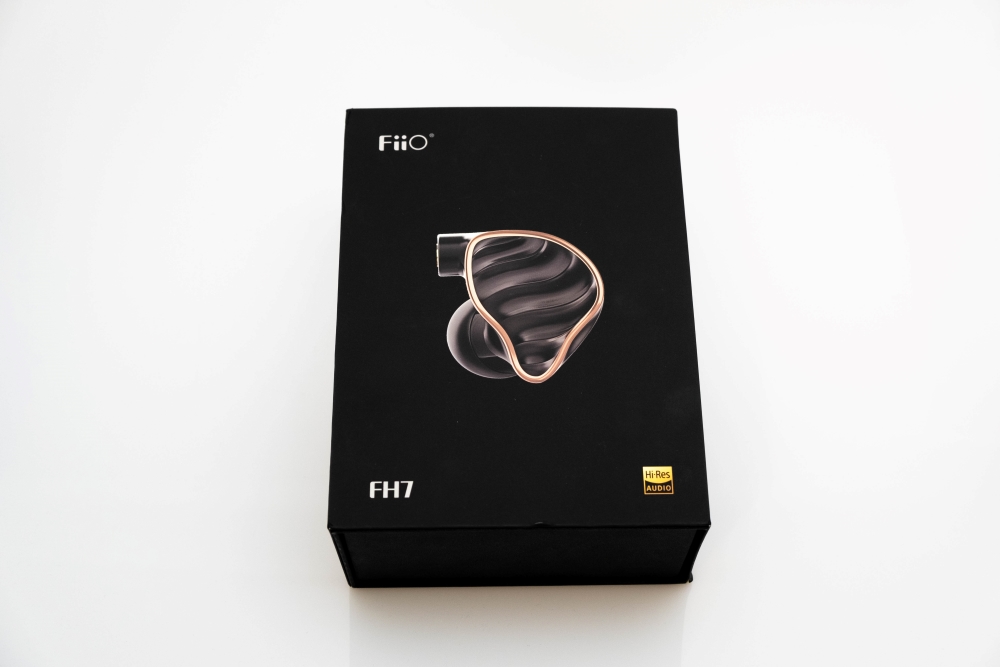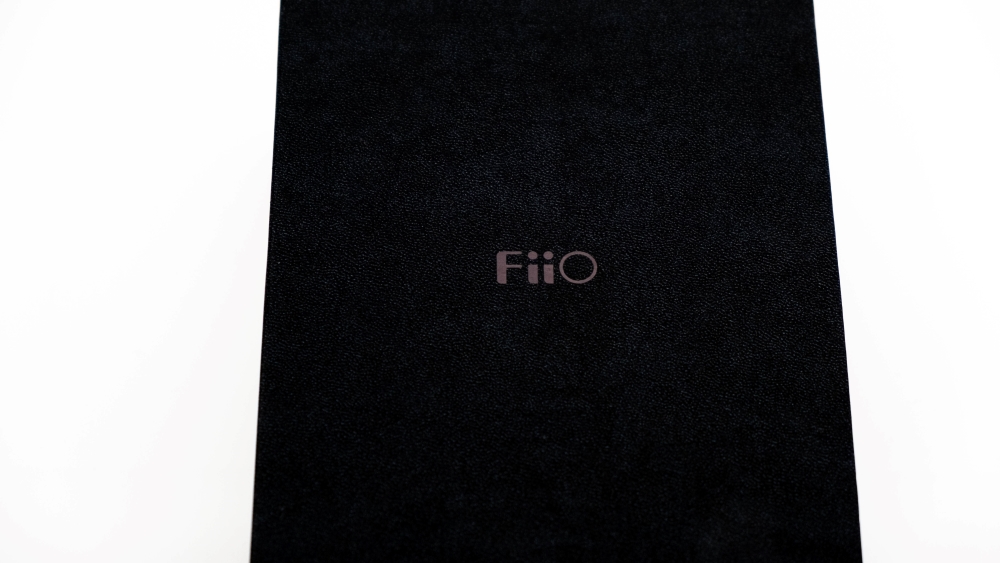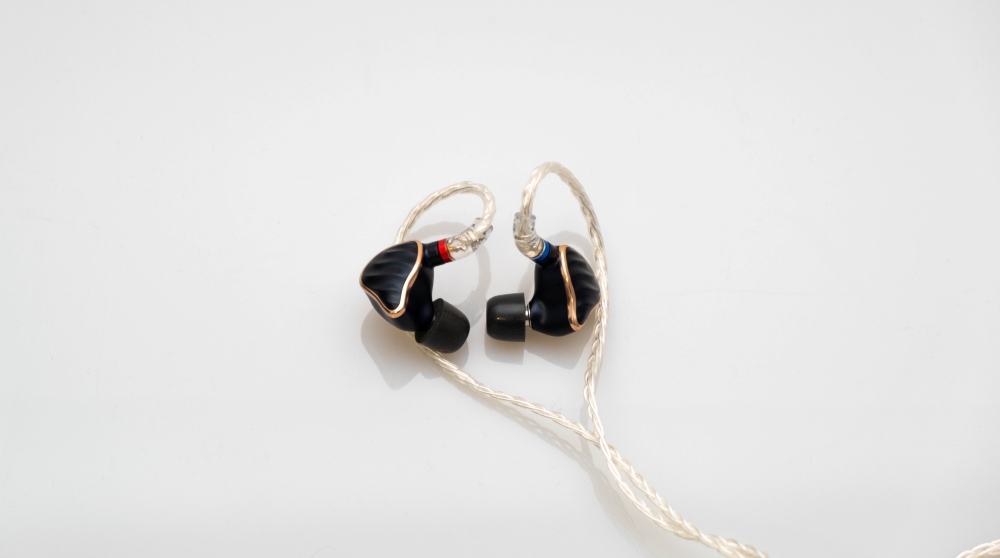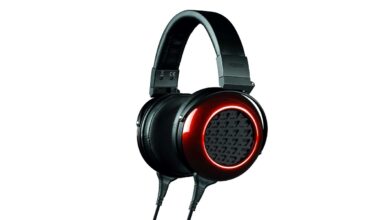FiiO FH7 – Genre Masters

My video review:
At FiiO Spring Launch Event held in March 2019, FiiO left me glued to the monitor for about 2 hours announcing crazy cool new innovative products. The most interesting ones for me were the M11 game-changing DAP and the all new FH7 flagship IEM from the company of the rising sun.
I don’t want to spoil from the get go that they did to me and my body, just wait and read, it will be worth it.
FiiO is raising the bar in their IEM line-up about once a year and this year is no exception to that rule, FH7 are looking like a grown-up, serious and very good-looking product.
Unpack me Baby
Unboxing experience is exceptional! I never seen such an IEM packaging even in >1000 USD IEMs, FiiO did an impressive job and the whole experience is opposed of Chi-Fi and looks more like a West-Fi unboxing experience to me, I am very impressed.

Package Contents
The inner black box has a leather-like feel to it, it doesn’t smell as paper, can’t really say what it is made of but it is very soft and smooth to the touch. Upon opening the box I am greeted by a beautiful sight: a black pill (thanks god it’s not a blue or red pill) and by the IEMs themselves. That pill actually houses 2 pairs of interchangeable sound filters, FH7 have a stock pre-applied filter as well. Pulling the plug, I mean the clear tape reveals an amazing sight, just look at it! Did you ever see so many ear tips in a package and a leather carry case? Gorgeous looking and so colorful, those look like audiophile candies to me.
FH7 seems to be holding a Guinness World Record (seriously guys, call them) in terms of how many ear-tips they come in the package, just look at those yummy little buggers screaming to be inserted inside your ears.

FH7 have a total 15 pairs (30 ear tips!) of ear-tips split into 6 categories, as follows:
- Balanced ear tips (3 pairs of S, M and L – the standard black silicone ones) Here’s a free tip on how to improve your FH7: take out the default balanced medium sized tip and never use it again! Bingo! It’s that easy! I promise ANY other tip will sound better.
- Vocal ear tips (3 pairs of S, M and L – the white silicone one with a red inner tube). These are boosting the midrange a bit and moves it forward to be more present. Love ’80-ties pop music? I bet; these are for you then.
- Memory foam tips (2 pair in S and M sizes – the black foam sticky ones) Here’s another free tip on how to improve your FH7: presuming you already followed my first tip, insert the memory foam tips and Voila! Your FH7 are improved and singing like colorful birds. These are my favorite tips
- Bi-Flange ear tip (a single M sized pair) Etymotic users know them very well. They should be inserted deeper for a better seal. Sadly, they don’t work me, my ear-holes are not that large (YET!) Insert at your own risk.
- Bass ear tips (3 pairs of S, M and L – the grey silicone ones with a red inner tube). Self-explanatory, are you a bass-head? You must consider yourself a true audiophile then, these will rock your world.
- Spin-Fit ear tips (3 sizes of S, M and L – the colorful ones). I left the best for last; I mean these ones and the memory foam ones are my favorite. So, what Spin-Fit is doing? They have a longer and softer nozzle and will stay much more comfortable inside your ear without breaking the seal. They work for me and these are the most comfortable tips to wear.

There’s also a blue leather case, it is big enough to carry a small DAP inside and looks very well made. Inside a smaller carry case can be found, a magnetic cable holder and a wax removal tool.
FA7 itself looks and feels premium. The shell is a CNC machined aluminum one and its bigger than expected. Luckily, thanks to longer nozzle the metallic shell is not pushing my ear and it is comfortable to wear. I am listening to them for two hours already with the memory foam tips and they still don’t bother me.
The detachable cable is not an ordinary silver-platted copper one, it is a copper-plated silver one (see the difference?) with high purity litz mono-crystalline wires inside. Normally this type of cable would be purchasable separately but FiiO put it in the package by default, a nice move.

Tech inside FH7
The FH7 shell is quite big for a reason as it hides 4 balanced armature drivers inside and a big ass 13.6mm dynamic driver.
Knowles sourced armature drivers will take care for midrange and treble duties and for a deep bass response FiiO developed a massive 13.6 mm beryllium coated driver and a custom cross-over to make them play nicely together. As far as I know the beryllium coated drivers in an IEM, that’s a first in the industry. Focal puts it in a much bigger desktop headphones, FiiO decided to put into portable IEMs. FiiO and Focal for that matter chose beryllium for its flexibility, lightness and extreme rigidity to withstand explosive bass dynamic swings that regular cellulose drives can’t render.
Besides putting beryllium on the dynamic driver FiiO also further developed a subwoofer like S.TURBO 2.0 acoustic design having inside a longer rounded sound turbines to further improve the bass response. This technology was first implemented in FH5 but was further improved with FH7.
There are also two very tiny almost invisible holes in the metal shell that will take out the air pressure between your ear canal and FH7 for a much better comfort during listening sessions.

Now, putting 5 drivers per side to work in harmony is quite a difficult task in the IEM kingdom. There should be a balance between all them and FiiO knows that better, they developed a first of its kind 3-way crossover for an extremely coherent and wide frequency response.
A novelty in FiiO’s portfolio is the inclusion of 3 pairs of interchangeable sound filters to further fine-tune your listening experience. It seems that sound tuning via ear-tips was just the first step.
The default pre-applied filter is the black one that offers the most balanced sound, I used this one the most. The red one will emphasis the bass response and the green one the treble presence. I think the default one sound most balanced and natural to me with no particular dips or rises.
As was the case on FA7 and FA1, the MMCX connectors on the IEM itself were vastly improved compared to their first iterations as F9, F9 PRO and FH1. It is much harder to pull out the cable, so it will no longer fall down by itself by normal usage, a very nice improvement.
If you have a DAP or a headphone amp with a balanced connection, I strongly recommend using a balanced cable with FH7 as it will open the soundstage even further, will add few depth layers to music and will tighten the bass performance, FH7 deserves a balanced connection.
FH7 has a nominal impedance of 16 Ω and a sensitivity of 111dB/1mW so powering them is quite an easy task, even vast majority of smartphones (that still carry a headphone jack) will power them nicely.
I presume if you can afford a nice pair of FH7 then you can afford a nice portable DAP to go with them, check the mighty M11 from FiiO, this wombo-combo did wonders for me and it is a recommended pairing.

Sound Performance
Here’s a true story: I was planning on doing a review for the KZ AS16 IEMs first, listened to them and was underwhelmed by the lack of bass and because of that dry midrange and thought, hey I should listen to the FH7 as well.
Unpacked them, got a smile on my face, plugged in and got blown away by everything I’ve heard! Actually I believe I never was so impressed by a pair of IEMs, I reviewed Sennheiser IE800 some time ago, then I listened to their successor IE800s, then got a Shure SE846 and later listened to a nice pair of JH13PRO, all had their strengths and weaknesses but man, I think FH7 doesn’t have a real weakness, FH7 is sounding better to me than those >1000 USD IEMs and here is why.
I. Genre Masters
Before going deep into the frequency response, I want to say that from 100-year old jazz like Django Reinhardt, to classical, to electronica, rock and metal, FH7 played all those extremely satisfying and very engaging. I consider them truly genre masters and this is the first IEM to take this title. From now on, a long list of impressive traits will follow as for my tiny ears FH7 is an impressive achievement in terms of sound quality.

II. Bass
I am by no means a basshead, but I do appreciate deep reaching sub-bass, layered and controlled mid-bass and FH7 delivered everything I wanted and maybe even more.
I am a bass-slam addict and that is why at home I am listening mostly to my Quad ERA-1 planars, they have among the best bass-slam in an open-back headphone and to this day I never heard the same impactful and slamming bass in a pair on IEMs.
FH7 changed my preconceptions about IEMs in general as it sounds like a full-sized desktop headphone and that is not an easy trait.
I fired my usual bass tracks as The Prodigy – Invisible Sun and Infected Mushroom – Groove Attack and remained speechless but inside I was joyfully screaming. At last! It’s deep reaching, multiple layered, very clean and has an agile kick and crazy slam into my eardrums. Is there anything better than this in terms of bass detail, deepness and kick? I don’t think so, for me that is a first. I never thought those small drivers can reach so low. Even Invisible Sun track revealed sub-bass information even at 25 Hz! I never heard that before in a pair of IEMs, bass response is surely playing in big-boy category.
Compared to all-armature based designs, hybrid headphones reached low but never had the speed, impact and control of the former ones, FH7 changed that in a big way, so not only bass is going really low, but it’s maintained, it’s controlled and it’s fast too.
Mid-bass is just ever so slightly elevated that adds a bit of naturalness and warmness to the mix, FH7 by no means are tuned towards a warm sound signature as FH7 are quite linear from start to finish with excellent frequency extremes on lowest and highest octaves.
Because of that speed and quickness in the bass, double-bass is just more pleasant to listen to as it never became a muddy bass blob so if you like a deep reaching and detailed bass response FH7 is exceptional and cannot be missed.

III. Midrange
Going on to the mid-section is made in a natural and smooth fashion, without a single drop, just a clean straight line across bass and midrange.
Vocal performance and weight of voice tone is again exceptional. Male voices will always sound imposing and soul reaching. Listening to Leonard Cohen is a bit scary as that voice moves so much more air than on other IEMs, it is like it is whispering directly into your brain. I had goosebumps at day times and scary jumps at night time with them. I cannot deny the naturalness FH7 is having. I am not sure, but I presume that part of the midrange, mostly lower-midrange is played by that big 13.6 mm driver as normally balanced armatures (BA for short from now on) can’t render a very natural and life like performance, especially on voices.
If I close my eyes Leonard is sitting in my room and I am humming together with him, his voice has a natural decay and tone. With BA drivers the voices should have a much shorter decay and much dryer tone, almost plasticky or metallic. That never happened with FH7.
Now, reading my description you would think that midrange is overdone or emphasized, but that’s not the case. Imagine how your favorite open-back planar-magnetic headphone is doing justice to midrange, this is exactly how FH7 is sounding: natural, soul reaching, smooth, deep and fades nor too quick nor too slow, just right.
IV. Treble
Oh boy! Here we go again… I clearly remember hearing the first FiiO made IEMs (forget F5) like F9 and F9 PRO and I was thinking that those have great potential and their next iterations should have a refined treble, I sent them an e-mail urging to smooth the initial mid-treble peak and extend the upper-treble for a truly linear treble response. FH5 did that so some degree, FA7 did that better, but man FH7 did that at the next, final level.
So, what I am hearing is a crystal-clear treble, with no particular peaks or dips, that is not bright or harsh but super extended to the subsonic levels.
Listening to live classical music, at some passages you hear those small little flies, tiny dynamic swings, those are not even sounds but you feel the air mass moving, if you hear that means you are listening to a high-end set of speakers or headphones and FH7 is doing that so easily, it’s like an easy game for them.
My short version is that treble has enough presence, air, a lot of detail, it is very extended but it is also smooth and non-fatiguing. Putting my right hand on my heart, FH7 surpassed the treble performance of my reference planar-magnetic headphones, this is the nicest treble I’ve heard in a pair of IEMs, nothing more or less can be said.

V. Slam and transient response
A fast transient response is nothing without a great impactful slam! Would you not agree with me?
Luckily, FH7 has an excellent slam, especially in the bass department and a lightning quick transient response. In absolute terms, an all-BA designed IEM should sound faster and a hybrid IEM should sound slower, but FH7 with its mumbo-jumbo probably at the cross-over level changed that rule, as FH7 is lightning quick and hits you like Thor’s hammer.
If it keeps up with double bass and double drums of angry speed-metal I am having my coffee at mornings, then it keeps up with Everything 😊
VI. Soundstage & Depth
Now, here it is where an interesting phenomenon is happening. With “normal” IEMs, not like these ones, a balanced connection will improve them a bit, or not at all. With FH7 going balanced on the M11 DAP is like my left to right soundstage is increasing drastically, that is really strange as FH5 and FA7 for that matter didn’t improve as much.
Using the standard SE 3.5mm (1/8”) headphone jack I’d say the stage is wide, but not super wide from left to right. Now, using the balanced 2.5 mm out of the M11 the left to right soundstage is becoming much wider, like I am switching my camera lens with a much wider one, the air bubbles between the notes will increase and I would walk by those notes much easier. So, how should I characterize the stage size of FH7? I don’t know, you should be that judge.
Depth is mostly the same on the SE or on the BAL output and I can easily appreciate the distance between me and a said note. The decay of the notes is natural and life like as every note will just disappear out of thin air and will not just stop or hit an imaginary wall, that amplifies the meaning of a good depth.

VII. A balanced story
As I was writing FH7 is sounding fine on the normal headphone jack, even out of a smartphone they will work, but would not make wonders. If wonders are what are you chasing for, then you should try a balanced connection with FH7.
Luckily, I have few additional cables and adapters so I tested them on the FiiO M11 and on the Aune S6 PRO using the balanced connection on both devices. Going balanced the biggest change is the separation of the notes and a much wider and spread out soundstage, it’s not taller, just left to right wider. FH7 is already super controlled sounding on the SE output and going balanced will not make them even tighter.
VIII. Comparisons
Who wants some interesting comparisons with previous FiiO flagship IEMs? Relax, I’ve got you covered and here we go.

FH7 vs FA7
When I was reviewing the FA7 I had the feeling of “almost there”, “almost perfect”, everything would start with “almost”, they were really nice, outstanding even on some parts but not extraordinary, they still had some quirks.
One of that is the base response, although going down the bass notes on FA7 didn’t have sustain, they had control but they would fade away too quickly. A Bass-guitar note doesn’t fade away quickly, it should leave a soft trail and on FA7 that was not happening, I was happy with them but not super happy.
Listening to Invisible Sun by The Prodigy I would not hear as vividly those 25 Hz vibrations; a shimmer would not pass through my spine, FA7 is not reaching Mariana Trench deep sub-bass levels.
Almost the same story repeats in the treble area, they were quite detailed and had the treble “almost” top-notch, still there were passages where I would not hear absolute detail and shimmer and some passages where a small drop in the mid-treble area will occur for a natural performance. That is a good thing for FA7 as they will not sound tiresome in the long run.
However, with FH7 there isn’t a drop in the mid-treble and I am even hearing few additional layers of treble information, a very pleasing experience to have.
With FH7 everything became perfect without an “almost” in front of it.
Now, comparing the size and materials, FA7 is slightly more comfortable as resin that is touching your ear is smoother and softer. However, FA7 has a longer nozzle and might even be more comfortable to others, if the FA7 shell was already pressing on your ear lobe, FH7 should not do that.
Both are made exceptionally well in terms of build quality and I don’t have any real complaints with any of them, but FA7 are looking just a bit extra juicy (colorful shells, clear resin, just yummy!).

FH7 vs FH5
I have used both with the same cable, same source and source material. Firing up No Surprises by Radiohead, I song that I adore and know very well. At 0:53 mark there is a tambourine that sounds a bit muffled on FH5, yet crystal clear and defined on FH7. Almost the same can be said about glockenspiel that is a bit muted on FH5 and full and vibrating on FH7. The bass line goes lower on FH7 and will have a longer sustain and control.
Firing up I.P.R. – Cartography the cymbals and double drums have a start, a small sustain and an end on FH7 with lots of details and shimmer. On FH5 cymbals have lower quality, a bit blurry sounding and are decaying faster.
There is no denying that FH7 just overall is a more detailed IEM and will extract much more information not only in the sub-bass but in the treble area as well.
Soundstage is clearly wider on FH7 and you have a better pin-point imaging where with FH5 everything happened in front of your face, FH5 has a narrower left to right soundstage.
The more I compare the two, the more I am falling in love with FH7.

Conclusion
Moving on into the conclusion I think FiiO did the right thing having a longer R&D time this time around, devoting mostly of it into fine tuning and balancing the frequency response.
Build quality is phenomenal, packaging is top class with a very wide selection of ear-tips. I mean I never seen such a wide selection of accessories inside the package.
Sound wise, FiiO really outdid themselves with this one as I never ever heard something better. Even those >1000 USD IEMs that I owned in the past or burrowed for weeks and months didn’t move me in such a way and didn’t lift my mood as much.
I think it’s time for me to say it: FH7 as a whole to me sounds unfu@k!ng-believable!
PROS:
- Best packaging I’ve seen in an IEM, a wide variety of accessories
- Awesome fit and finish, a very high-quality IEM
- Godly tonal balance, there is nothing more or less than what’s on your recordings
- Open wide soundstage, deep sounding as well
- Probably the best sub-bass and bass performance I’ve heard in an IEM
- Natural, smooth and soul reaching midrange
- Excellent and wide treble response, no harshness, no grain, no nothing
- Transparency and detail retrieval kings
- Superb kick, slam and speed
- Natural decay of the notes, with great sustain as well
- Best price to performance ratio, I would not consider buying >1000 IEMs anymore
CONS:
- No balanced cable in the package
ASSOCIATED EQUIPMENT:
- DAPs: FiiO M11, X5 MKIII
- DACs: Matrix X-Sabre PRO, Aune S6 PRO, Burson Playmate & Swing
- Headphone amps: Headamp Gilmore Lite MK2, Pico Power, Erzetich Bacillus, Burson Playmate
- Headphones: Quad ERA-1, Sennheiser HD660S, Momentum 2.0
- IEMs: FiiO FH7, FA7, FH5







